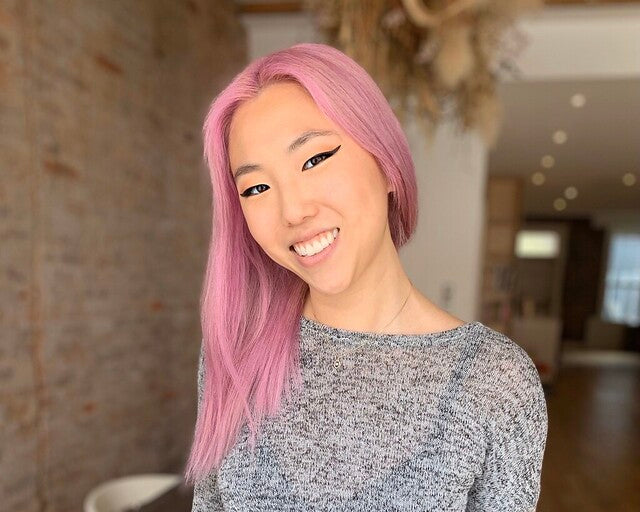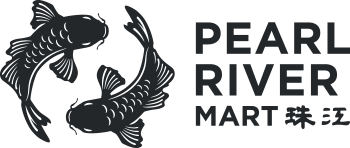
Artist-in-Residence Nancy Pappas: A Journey Through Art, Food, and Identity
You could say Nancy Pappas is obsessed with food. Making it, illustrating it, breaking it down to its simplest parts to understand it as a whole. But for the New York-and-Seoul-based artist, food is much more than about taste or feeling full. It's about learning who she is as an artist and Korean adoptee, and where she fits in the world. We had the chance to speak to Nancy about her exhibition, ESSENTIAL INGREDIENTS: A RECIPE FOR REDISCOVERY, living in Korea, and what certain foods mean to her.
Tell me a little bit about your background. Where did you grow up?
I'm a South Korean adoptee raised in St. Louis, MO. I've always had an interest in the arts, exploring a lot of different creative outlets from music to design. I attended the University of Kansas for Visual Communications/Graphic Design and lived in Kansas City for a couple years before moving to New York.
When and how did your interest in art and food begin?
When I was adopted at 19 months, I exhibited a lot of creativity, and it was very clear to my parents I gravitated to the arts. I’m fortunate that they supported me through art camps, classes, and extracurriculars early on. One of my favorite stories my parents shared with me was shortly after I arrived to the States, they gave me some Play-Doh, and to their surprise I quickly and diligently created elaborate snakes and animals with alternating colors and shapes.
As for my interest in food, that began in college. I had a small window between studios and I'd come home and bake for my classmates. I often wouldn't even eat what I made because the process of just baking was what I was seeking out. It was a creative and therapeutic outlet between stressful classes.
Tell me about your career trajectory after college.
After college I worked in advertising in Kansas City, MO for two years before moving to New York City. In Kansas City I dabbled more in my interest in food and beverage, befriending bartenders and chefs. When I moved to New York I continued in advertising for about two years before switching to freelance.
At that time I still wasn't quite sure what I wanted, but I knew travel and food made me happy. I moved to London for two months to recalibrate (it was like a self-gifted sabbatical), and when I returned to New York, I committed to finding clients in the hospitality industry while diligently saving money so I could leave the country two or three times a year.
After three years of freelance and travel, I accepted a full time position with Cherry Bombe, a food media publication focused on women in food. After more than two years there, I’ve recently returned to freelancing, pursuing food hospitality clients, and working with the BIPOC community.
When was the first time you returned to Korea? What was that like?
Until quite recently, I was never interested in my Korean identity, motherland, or general Asian American self. It was in 2016 that I began to make some Asian American friendships, and in 2018 that I pursued my birth search. This is all still very new to me.
I did visit Korea with my family in middle school, but I didn’t really care or understand what it meant — I was crushing it on my Game Boy playing Pokemon the whole time — but as an adult I returned on my own in 2019 to meet my birth family. Naturally, that resulted in mixed emotions — joy and enthusiasm, relief but also grief and mourning, confusion. And as much of an avid traveler as I am, this was the first trip I went completely solo — with no knowledge of the language, no friendships, and had no support system there.
Korea is digestible and modern — it's foreign but friendly, and although I had been in therapy for some time prior to prepare myself, it was still very overwhelming, as you can imagine. The whole experience was very mind-out-of-body. I'm definitely still processing the whole thing and trying to understand where I belong in it all.
Can you describe a little more about what it's been like living in Korea as a Korean American?
It’s certainly difficult because I don’t speak the language. It's also challenging because while I am Korean, I'm not native Korean. I may look like the people passing by me, but that's about the extent of it. I don't often feel like I belong.
I feel very alienated as a Korean American, an expat, and someone who doesn't speak the language. Earlier in my time there, I'd be pressured for not speaking Korean by native Koreans (by the older generation), but when they'd find out I’m adopted, they'd flip and adamantly welcome me back home, and apologize on behalf of the country. There's a stigma and deep historical and country shame around international adoption. That was definitely a very new experience for me, and I still don't quite know how I feel about it all.
When did you make Korea one of your home bases? How did you come to that decision?
I began the search and unexpectedly found my birth mother in 2018, and then reunited with her in 2019 in Seoul. I didn’t expect to move to Korea permanently but an adoption organization offered me a three-month language scholarship in 2020, and I jumped at the opportunity to be closer to my birth family for a couple months and hopefully shrink the language barrier.
I juggled full-time work in New York and full-time classes in Seoul. As Covid raged on and the anti-Asian hate and racism continued to spread through the States, I decided to stay in Korea because it felt safer. Things back home didn't improve, and before I knew it, I was in Seoul for nine months before coming back to the States to visit.
I also got very lucky with having a solid friend group in Seoul. A mix of of Korean Americans and Korean American adoptees, and they all welcomed me in kindly. It's a plus that most of them are in the food industry. I've already started to work with a handful of them. I bring something a little different to Korea, design and illustration wise, so I'm looking forward to exploring more of Seoul's art and design culture.
You've mentioned single, seemingly simple ingredients as the theme of your exhibition, and how that represents the idea of rediscovering your roots and identity in an equally simple form. Can you expand on that? What does it mean to rediscover your roots and identity at its simplest form?
Being disconnected from my Korean identity and homeland naturally feels very overwhelming and distant — unattainable. I don’t understand the language or the culture and seemingly day-to-day things are challenging and confusing for me.
But like with anything, when you bring things back down to their basics, they're easier to digest, learn, and relearn. I remind myself that this is all new to me and it's okay to simplify and start slow. I'm taking level one language classes and teaching myself about Korean and Asian ingredients. If I have never had a certain dish, I familiarize myself with the ingredients. I ask questions and look up what makes up the dish. That way I can understand it better — by first learning about the simple things that make up the more complex whole.
Another theme of your exhibition is lucky foods. Do you believe certain foods are lucky? Do you eat certain ones on special occasions?
I’m not sure if I believe foods are lucky since I wasn’t brought up that way nor was I brought up celebrating Lunar New Year and the traditions around them. But I have adopted new rituals as I’ve gotten older and explored my Korean identity, like eating tteokmanduguk [a savory rice cake soup] for the new year.
All the foods in your exhibition have meaning. Are there any that have a special significance for you?
Napa cabbage and chili peppers are very quintessentially Korean. They're major components for making kimchi, a staple in Korean cuisine. I didn't properly make kimchi for myself until my mid-20s and I had no idea what I was doing. But I understood the ingredients, just not the process which feels very metaphorical.
Persimmons are also very significant. I hadn’t seen or eaten persimmons growing up in St. Louis, and didn't seek them out when I moved to New York. So, when I arrived in Korea, they became very symbolic to me. Outside my window at KoRoot, a guesthouse for adoptees (I stayed there twice, in 2019 and 2020), there was this enormous, beautiful persimmon tree. The bright neon-like orange of the persimmons were my favorite things to wake up to and walk beneath as I’d leave for the day.
Then when I met my birth mother, I stayed with her and my little sister for a week in their home down south in the country. Naturally, the whole experience felt overwhelming, daunting, and exhausting. The first morning with them though, I went outside and my birth mother was balancing on a wobbly ladder under a tree, pulling persimmons off and tossing them into a bucket at her feet. She gestured for me to come over, pick up the bucket, and help her. It was strange — we were strangers — but this mundane chore felt so welcoming, and home-like, all at the same time. I think of this all the time. It encompasses what it feels like for me living in Korea.
ESSENTIAL INGREDIENTS: A RECIPE FOR REDISCOVERY is on view in our SoHo gallery from Jan. 20 through April 24. Free and open to the public every day between 11 a.m. and 7 p.m. Follow Nancy on Instagram and shop at her store.
